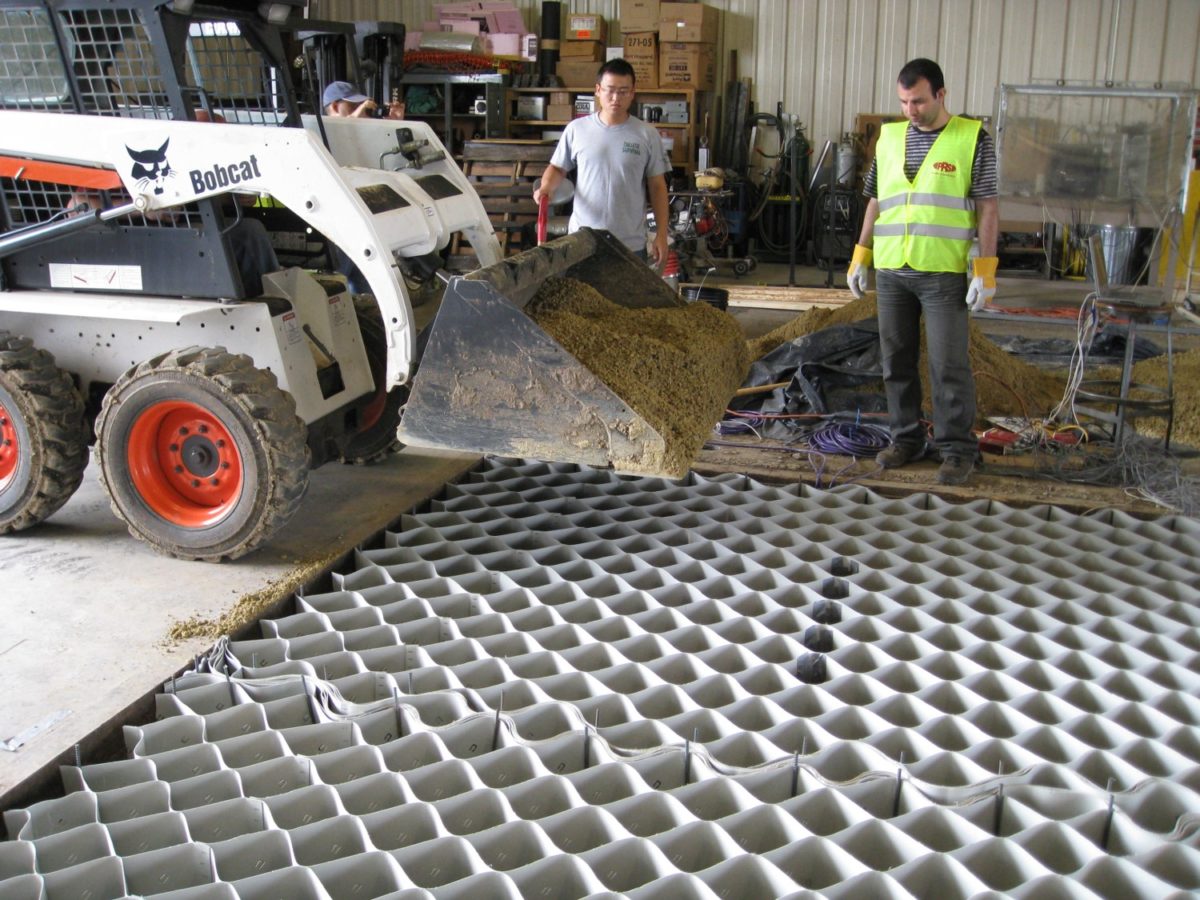Bearing Capacity Improvement of Gravel Base Layers in Road Constructions Using Geocells
Comparative testing demonstrated that Neoloy® Tough-Cells can improve layer modulus by up to 10 per cent


Summary
Neoloy Tough-Cells made from different materials, with different cell heights and diameters were tested in a test box. The test result show that a single layer increases the bearing capacity of the soil and reduces the vertical stresses on the soft subgrade.
- Study includes lab plate box test and in-situ asphalt pavements (Road K-23)
- Results show that Neoloy decreased vertical stresses by 30-, reduced deflections on the asphalt service by15- and the back-calculated layer modulus increased by 10-.
Geocells consist of a series of interconnected single cells which are connected at their joints and forming a honeycomb structure. The geocells are expanded at the construction site and filled with soil. The cell walls completely encase the infill material and provide an all -around confinement to the soil. During vertical loading hoop stresses within the cell walls and earth resistance in the adjacent cells are mobilized which increase the stiffness and the load-deformation behavior of the soil.
Model tests on a scale of 1:1 were carried out to evaluate the influence of a geocell layer on the load-deformation behavior of the soil. Geocells made from different materials, with different cell heights and different cell diameters were tested in a test box with inside dimensions of 2m length, 2m height and 2m width. To simulate soft subgrade material an artificial mixed soil called “Glyben” was used.
The test results show that a geocell layer increases the bearing capacity of the soil and reduces the vertical stresses on the soft subgrade. To verify these results geocell reinforced and unreinforced in-situ test fields were carried out within different asphalt paved road constructions. Vehicle crossing tests and falling weight deflectometer measurements show that the stresses beneath the geocell layer were reduced about 30 percent, the deflections on asphalt surface were reduced about 15 percent and the back calculated layer modulus were increased about 10 percent compared to the unreinforced test section.
Click here to download the full article
Click here to read more about Neoloy reinforcement in road construction